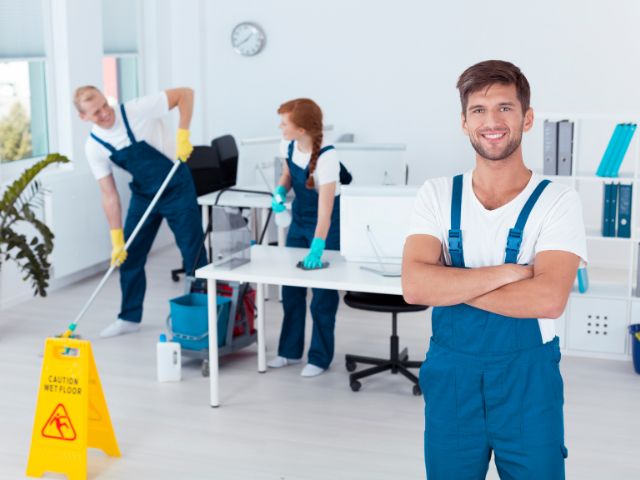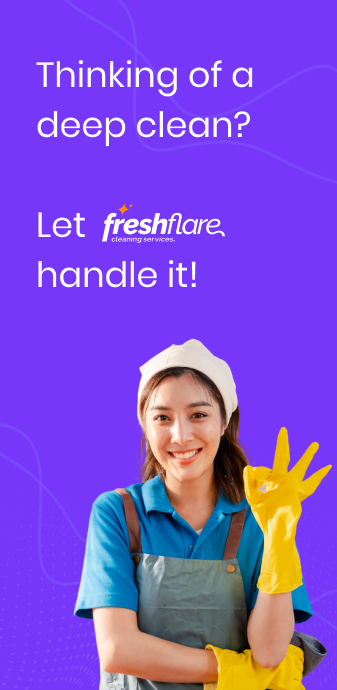The COVID-19 pandemic has reshaped nearly every aspect of daily life—including the way we think about and implement cleaning practices. In this blog post, we explore how COVID-19 transformed the cleaning industry, examine long-term changes, and highlight new practices that are here to stay. As businesses and households have had to adapt, cleaning innovation has become not just a buzzword but a necessity in ensuring safe and healthy environments.
The New Normal in Cleaning
Before the pandemic, many cleaning routines followed a predictable schedule focused on aesthetic upkeep and basic hygiene. However, COVID-19 forced a paradigm shift in priorities. With the virus spreading rapidly and public health concerns at an all-time high, cleaning methods had to evolve—emphasizing rigorous sanitation, disinfection, and continuous monitoring of surfaces.
A Shift in Priorities
- Heightened Sanitation Standards: Organizations and homes began to implement more frequent and thorough cleaning routines. The focus shifted to reducing microbial presence on surfaces, which led to the adoption of advanced disinfectants and sanitizers.
- Integration of Technology: The cleaning industry saw a surge in technological innovations, including automated cleaning devices, electrostatic sprayers, and even UV light disinfection systems. These tools have played a critical role in achieving higher sanitation standards.
- Increased Training and Safety Protocols: Cleaning staff were provided with extensive training in proper disinfection techniques and the use of personal protective equipment (PPE), ensuring that safety measures were strictly followed.
Long-Term Changes in the Cleaning Industry
The changes brought about by the pandemic aren’t temporary adjustments; they represent a long-term evolution in how cleaning is approached. Several trends that emerged during COVID-19 are now set to become permanent fixtures in the industry.
Enhanced Disinfection Protocols
One of the most significant changes is the widespread adoption of advanced disinfection protocols. No longer is a simple wipe-down sufficient; deep cleaning and thorough sanitation are now at the forefront. Businesses, schools, healthcare facilities, and residential spaces have all invested in:
- Electrostatic Spraying: This method applies disinfectant evenly over large areas, ensuring that even hard-to-reach spaces are covered.
- UV-C Light Technology: Increasingly popular for its ability to inactivate pathogens on surfaces, UV-C light has become a game changer in high-risk environments.
- Antimicrobial Coatings: Surfaces treated with these coatings can continuously combat bacteria and viruses, reducing the need for constant reapplication of disinfectants.
Digital Transformation in Cleaning
Technology has played a vital role in modernizing cleaning services. The pandemic accelerated the integration of digital tools that streamline operations, improve efficiency, and ensure quality control.
- Automated Cleaning Systems: Robots and automated cleaning devices are being deployed in various settings, from office spaces to hospitals, ensuring consistent and efficient cleaning.
- Data-Driven Solutions: Sensors and IoT devices now monitor cleaning frequency and efficacy, alerting facilities when additional attention is needed.
- Mobile Apps and Software: Digital scheduling and reporting tools have made it easier for cleaning companies to manage teams, track progress, and maintain transparency with clients.
Evolving Customer Expectations
The heightened awareness around cleanliness has also changed what customers expect from cleaning services. Clients now demand not only regular maintenance but also a demonstration of rigorous hygiene standards. This shift has led to:
- Increased Accountability: Service providers are now required to provide detailed cleaning logs and reports, offering transparency and building trust.
- Customized Solutions: Recognizing that every environment has unique needs, many cleaning companies now offer tailored services that address specific challenges—from healthcare facilities to busy office complexes.
- Enhanced Communication: Clients appreciate real-time updates and proactive communication regarding the cleaning measures being implemented.
Spotlight on Innovative Practices
The pandemic pushed the cleaning industry to rethink traditional methods. Clean environments have become a key priority, and one standout example of cleaning innovation emerged as businesses adapted to new health and safety protocols. By adopting cutting-edge technology and developing new operational practices, the industry is now more resilient and responsive than ever.
Case Study: Residential and Commercial Impact
Residential Cleaning:
- In-Home Safety: Homeowners are now more conscious of the products and methods used in their personal spaces. With an increase in at-home time, maintaining a sanitized living environment became paramount.
- Eco-Friendly Approaches: Many families have opted for cleaning products that are not only effective but also safe for children and pets, driving a demand for environmentally responsible cleaning solutions.
Commercial Cleaning:
- Office Environments: With hybrid work models becoming more prevalent, offices have had to adapt their cleaning schedules to accommodate fluctuating occupancy levels. This includes more frequent deep-cleaning sessions during off-hours.
- Public Spaces: Retail locations, transportation hubs, and restaurants have overhauled their cleaning protocols to reassure customers and employees alike.
The Role of Fresh Flare Cleaning Services
In an era where cleanliness is synonymous with safety, Fresh Flare Cleaning Services stands out by embracing these long-term changes and technological advancements. By continually updating their cleaning practices and integrating the latest disinfection technologies, they provide exceptional service that meets the elevated standards required in a post-pandemic world.
- Expertise: Their team is rigorously trained in the latest sanitation protocols, ensuring every corner of your space is safe.
- Commitment to Quality: By employing state-of-the-art equipment and methods, they deliver unparalleled cleaning services that surpass industry norms.
- Customer-Centric Approach: Tailored cleaning plans that address specific needs of residential and commercial clients make them a trusted partner for ensuring health and safety.
Key Trends and Innovations in Cleaning
The industry is now witnessing a blend of technology and heightened hygiene standards, leading to several key trends:
Bullet Points of Emerging Trends
- Sustainable Practices: The demand for eco-friendly cleaning products and methods continues to grow. Clients increasingly seek sustainable solutions that protect both health and the environment.
- Integration of AI: Artificial intelligence is being leveraged to optimize cleaning schedules and predict maintenance needs. AI-driven analytics help in assessing cleaning efficacy and identifying areas that need attention.
- Remote Monitoring: With the rise of IoT devices, remote monitoring of cleaning operations has become a reality. This ensures accountability and real-time updates on cleaning activities.
- Health and Safety Certifications: Obtaining certifications that verify adherence to enhanced cleaning standards has become a competitive edge for service providers.
Embracing a Culture of Continuous Improvement
The journey toward a safer environment is ongoing. Organizations and cleaning service providers are now committed to continuous learning and improvement. By staying abreast of the latest research and technological advancements, they ensure that their methods remain effective against emerging health threats.
- Employee Training: Regular training sessions are essential for keeping teams updated on the best practices in sanitation.
- Investment in Research: Companies are investing in research to develop more efficient and eco-friendly cleaning agents and methods.
- Collaboration with Health Experts: Partnerships with public health experts ensure that cleaning protocols are based on the latest scientific findings.
Future Outlook for the Cleaning Industry
Looking ahead, the cleaning industry is poised to evolve further. Innovations driven by necessity during the pandemic are laying the groundwork for a more resilient future. As we navigate a post-COVID landscape, several factors will continue to shape the industry:
Predictive Trends for the Next Decade
- Integration of Robotics: The use of robotics in cleaning is expected to become even more prevalent. Automated systems will handle routine tasks, allowing human workers to focus on areas that require a personal touch.
- Enhanced Regulatory Standards: Governments and regulatory bodies are likely to implement stricter hygiene standards, pushing the industry to maintain high levels of cleanliness.
- Consumer Empowerment: With access to real-time cleaning reports and digital dashboards, consumers will have more control over their cleaning service decisions.
By focusing on long-term strategies and investing in continuous improvement, the cleaning industry is not only overcoming the challenges posed by the pandemic but is also setting new benchmarks for safety and efficiency. cleaning innovation is now at the heart of this transformation, driving forward improvements that will define the future of hygiene and sanitation.
Conclusion
In summary, the COVID-19 pandemic has irrevocably transformed the cleaning industry. From enhanced disinfection protocols and digital transformation to evolving customer expectations, the lessons learned during the crisis are shaping a more resilient and innovative future. The integration of advanced technologies and a commitment to rigorous sanitation standards have set a new bar for what clients expect from their cleaning services. As we move forward, embracing these changes will be crucial to maintaining safe environments in both residential and commercial settings. cleaning innovation remains the cornerstone of these developments, ensuring that our spaces remain secure, healthy, and welcoming.
At Fresh Flare Cleaning Services, we are dedicated to implementing these transformative practices to offer exceptional cleaning services that keep up with today’s challenges. We invite you to explore our website for more insights into our cleaning solutions and how we can help you achieve a safer environment.
For additional insights into the future of the cleaning industry, we encourage you to read our previous blog post on The Future of Cleaning: Robotics and Automation in Professional Services.
Embrace the evolution of hygiene and let our expertise guide you toward a cleaner, healthier future.
By staying informed and proactive, we can all contribute to a safer world—one clean space at a time.





